Green Burials
By Brad Lancaster
© 2010 Drops in a Bucket Blog, www.HarvestingRainwater.com
When I was little I was terrified of death. I often cried myself to sleep as I thought of the end of life. It seemed so bleak, pointless, and severe.
Mom tried to comfort me with the concept of going to heaven. This did not reassure me at all. “How do you know there is a heaven?” I’d ask. “Have you been there?”
Eventually, I just numbed myself to the fear by burying it in the recesses of my mind and body.
Years later the fear evaporated with an incredible discovery – composting. Yes! Here was tangible proof that there was life after death, that everything did not just end/stop/vanish with death. Instead, things transformed. In the compost pile I saw kitchen scraps, weeds, and a dead chicken decompose into beautiful, rich, fertile soil in which earthworms, mycelia, chiles, and all kinds of new life grew.
Death no longer scared me, now it excited me. My composting dead body could generate myriad life! Don’t get me wrong: I’m in no rush to experience this. But when it eventually does happen – no problem.
Maybe.
My dead body could generate life, or more death depending on how it is disposed of.
The conventional death industry embalms bodies with a toxic brew of formaldehyde, phenol, and menthol, which can contaminate groundwater and generate cancer and other disease in those doing the embalming.1 According to Grave Matters, today the U.S. funeral industry buries over 3 pounds of the formaldehyde-based “formalin” with every embalmed body (totaling 800,000 gallons [3,028,000 liters] of formaldehyde a year),2 while from the Civil War era to 1910, arsenic, zinc, and lead where the preferred toxic embalming compounds.3
Then there are the caskets, turning cemeteries into landfills. Grave Matters states, “Over time the typical ten-acre [4 ha] swath of cemetery ground contains enough coffin wood to construct more than forty houses, nine hundred-plus tons [816,000 kg] of casket steel, and another twenty thousand tons [18,143,000 kg] of vault concrete.”4
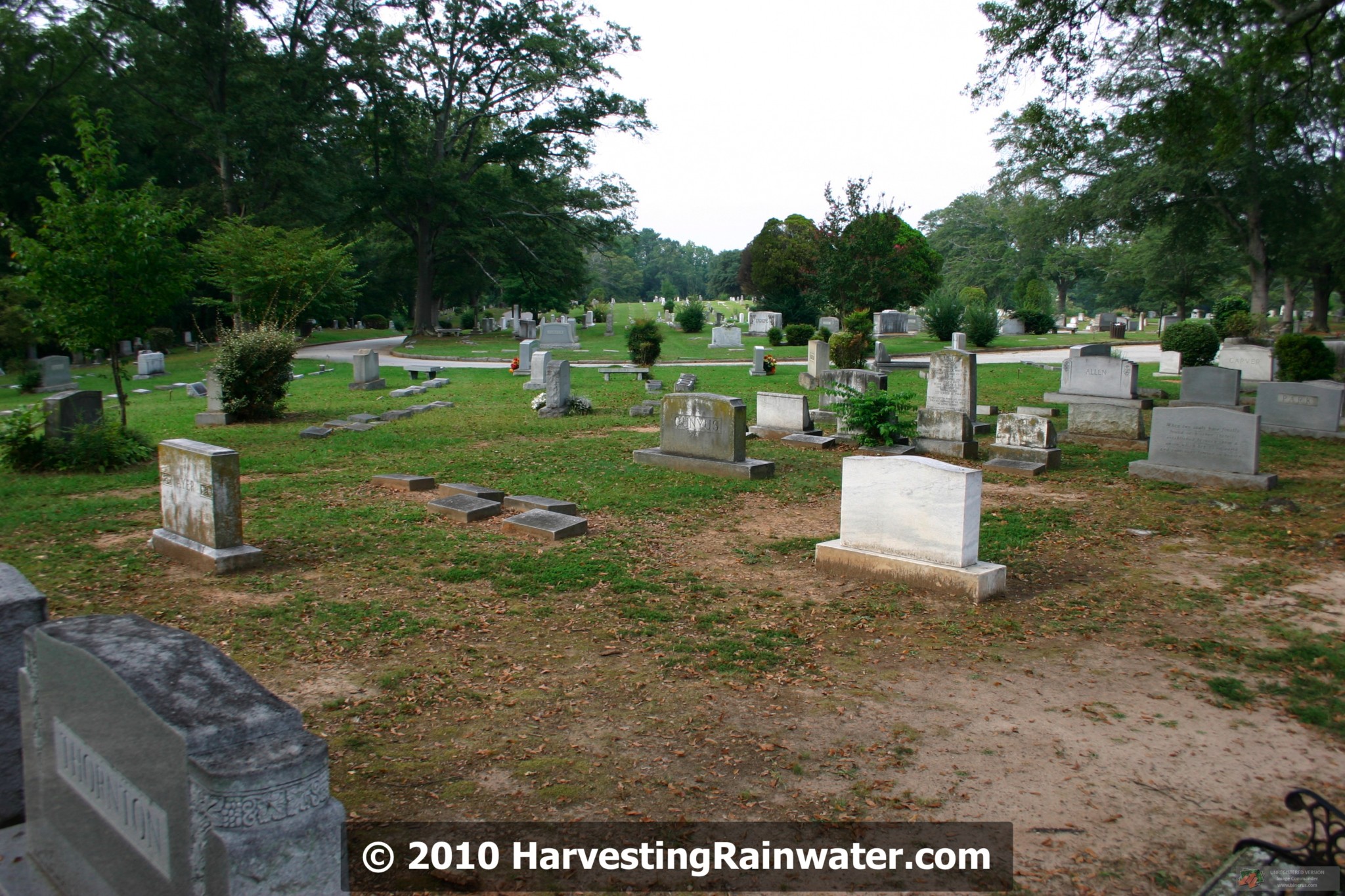
Cremation avoids embalming toxins, and the body can be burned in a shroud or cardboard container instead of a standard casket to consume less fuel and release fewer pollutants. But the fuel needed to incinerate the body is still substantial. Carbon monoxide and sulfur dioxide are typical emissions along with toxic trace metals such as mercury – which comes from dental fillings (a good reason to ask for mercury-free fillings while alive).
All crematories in the U.S. may emit 5,000 pounds [2,267 kg] of mercury a year, while in the United Kingdom four times that amount is emitted due to a higher percent of the population choosing cremation.5
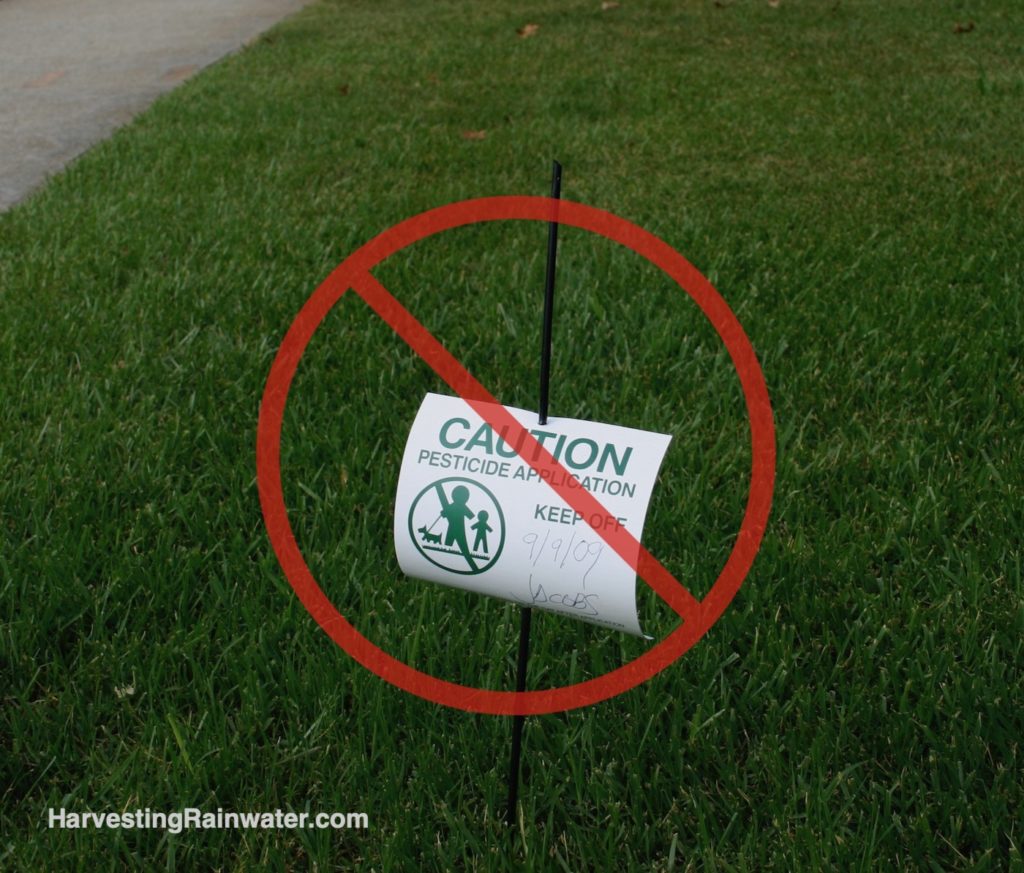
Photo: Brad Lancaster
Depressing.
Deadening.
Friend and mentor Tim Murphy gave me a different vision. He wants to be buried toxin-free and naked, ass up, in the fetal position, with an acorn up his butt. “Plant me, and plant a tree. Years later you and others can come sit under my shade, harvest some acorns, and celebrate what is possible.”
I sometimes think of Tim as a radical traditionalist, and a small, but growing segment of the death industry is enabling others to take a similar path that encourages the natural decomposition of the dead and regeneration of other life from the process rather than trying to halt or slow what will eventually happen anyway. The website www.GreenBurialCouncil.org is one conduit to this path. And the book Caring for the Dead: A Complete Guide for Those Making Funeral Arrangements with or without a Funeral Director by Lisa Carlson is another conduit if you want to reduce or eliminate your participation in a death industry.
A green burial does not allow toxic embalming, concrete vaults, or elaborate caskets, which can reduce the cost of a burial by $8,000 to $12,000, according to memorial ecologist Joe Whittaker. Young trees or an engraved fieldstone are recommended over tombstones.
I experienced a new green or conservation burial ground for all faiths first hand at Honey Creek Woodlands just outside of Atlanta, Georgia. It is a beautiful place with very caring and dedicated staff, including Joe Whittaker. And it is erupting with new life.
It is located on and beside a section of once-grazed and clear-cut forest in the heart of the 2,100-acre [849-ha] grounds of the Monastery of the Holy Spirit. The monastery grounds are bordered by and connected to a state park and the network of footpaths, creeks, and wildlife corridors of the park and encompassing 8,000-acre [2,327-ha] Arabia Mountain Heritage Area. This is a huge strength for a final resting place, since many people already feel connected to this land.
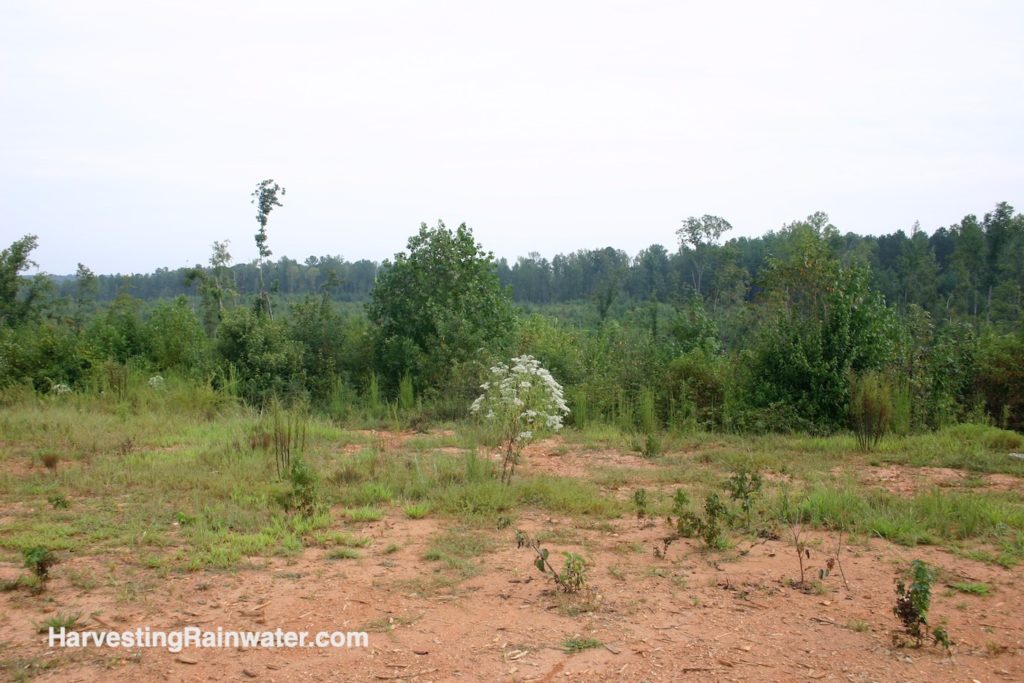
Photo: Brad Lancaster
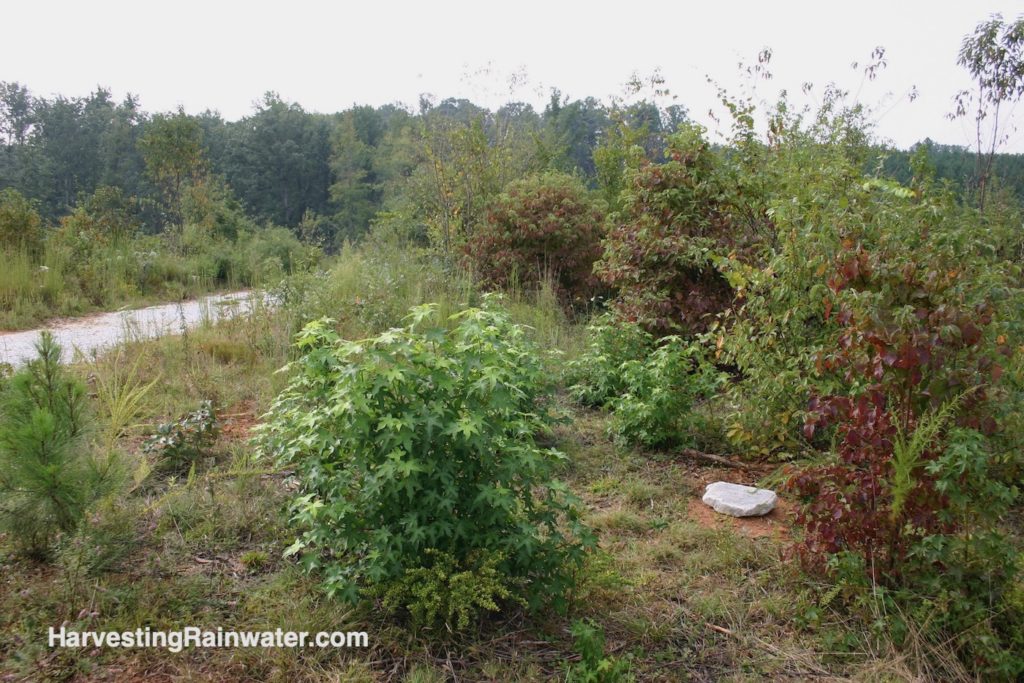
Photo: Brad Lancaster
First and foremost, the burial grounds are a nature preserve, with the goal of enhancing a 50-year succession back to a mixed hardwood forest, through such practices as selective weeding of invasive exotics, seeding and planting native plant stock, and adding organic matter to the soil.
Bodies are planted just 3 to 3.5 feet [0.9 to 1.06 m] deep because microbial activity and soil life drops tremendously at depths greater than 4 feet [1.21 m]. Above the body the excavated soil is placed in a mound with the topsoil placed back on top for a total initial “depth” of about 5 feet [1.5 m]. This is then covered with a light pine needle mulch and native wildflower seed. The Georgia Native Plant Society ensures only natives are used. Flowers and butterflies soon cover the 2-foot [0.6-m] tall burial mound – over 64 species of butterflies were counted in one day in 2008. The mound settles completely after a few years.
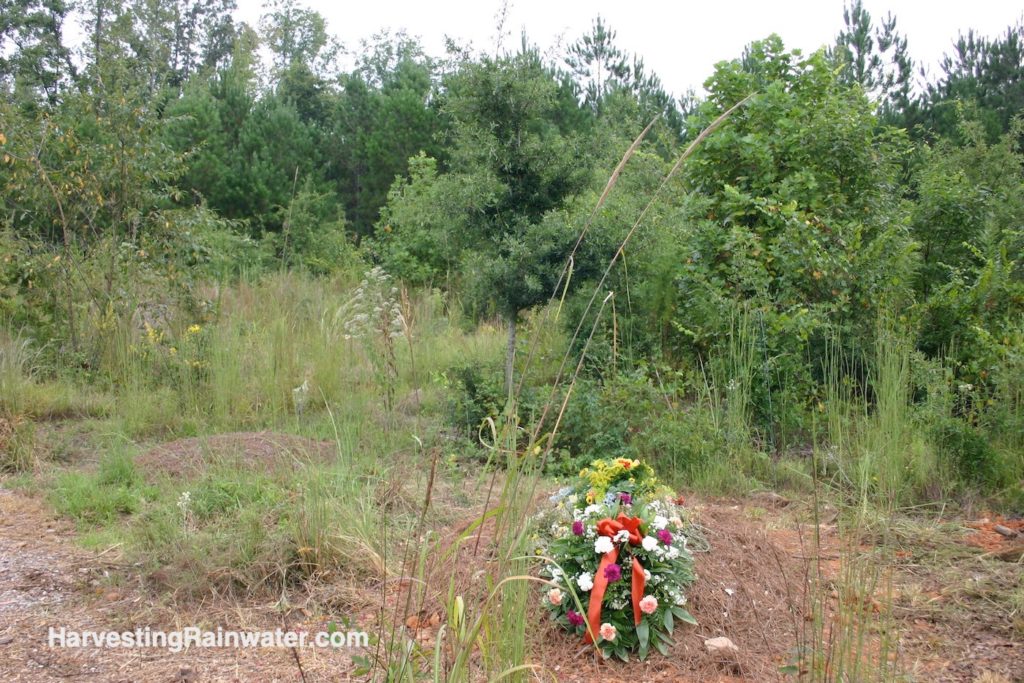
Photo: Brad Lancaster
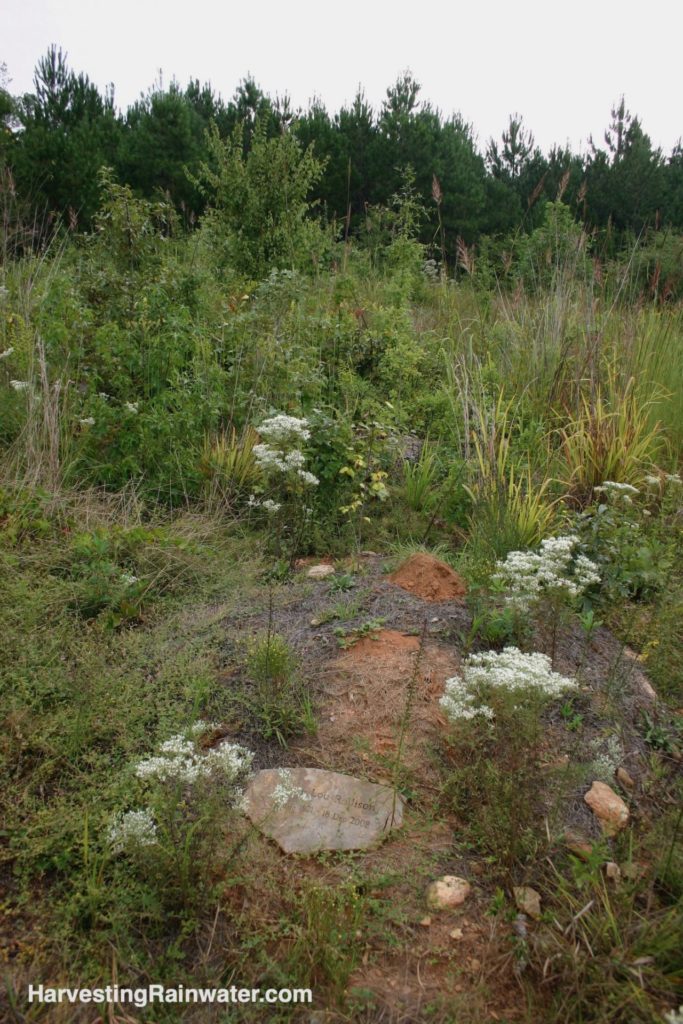
Photo: Brad Lancaster
The process is so visible! So beautiful! I visited a day-old burial; fresh flowers still atop the grave. 10 feet [3 m] away, dried and shriveled flowers rested atop a week-old burial. And as I looked about I saw I was surrounded by burials, all in various stages of settling and regeneration. The older they were, the greater the density of vegetation atop them, and the more level the soil.
I saw a family cremation plot circle of field stones surrounding a tree. All were again reunited and rooted around their family’s tree.
I felt revived just being in this regenerating forest. I felt…
Alive!
[BREAK]
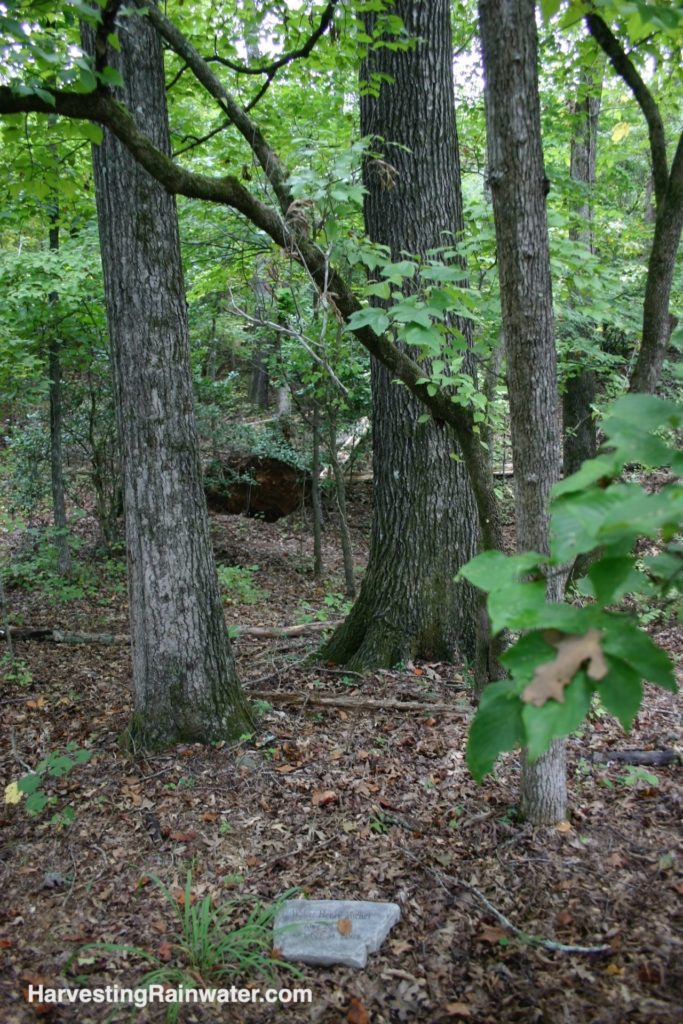
Photo: Brad Lancaster
REFERENCES:
1. Harris, Mark. Grave Matters: A Journey Through the Modern Funeral Industry to a Natural Way of Burial. Scribner, 2007. pp. 40, 41.
2. Harris, Mark. Grave Matters: A Journey Through the Modern Funeral Industry to a Natural Way of Burial. Scribner, 2007. pp. 40, 56.
3. Harris, Mark. Grave Matters: A Journey Through the Modern Funeral Industry to a Natural Way of Burial. Scribner, 2007. pp. 30, 39.
4. Harris, Mark. Grave Matters: A Journey Through the Modern Funeral Industry to a Natural Way of Burial. Scribner, 2007. p. 38.
5. Harris, Mark. Grave Matters: A Journey Through the Modern Funeral Industry to a Natural Way of Burial. Scribner, 2007. p. 61.
[BREAK]
For more information about the legalities of green burials in your region, see the book Caring for the Dead: A Complete Guide for Those Making Funeral Arrangements with or without a Funeral Director by Lisa Carlson, mentioned above.
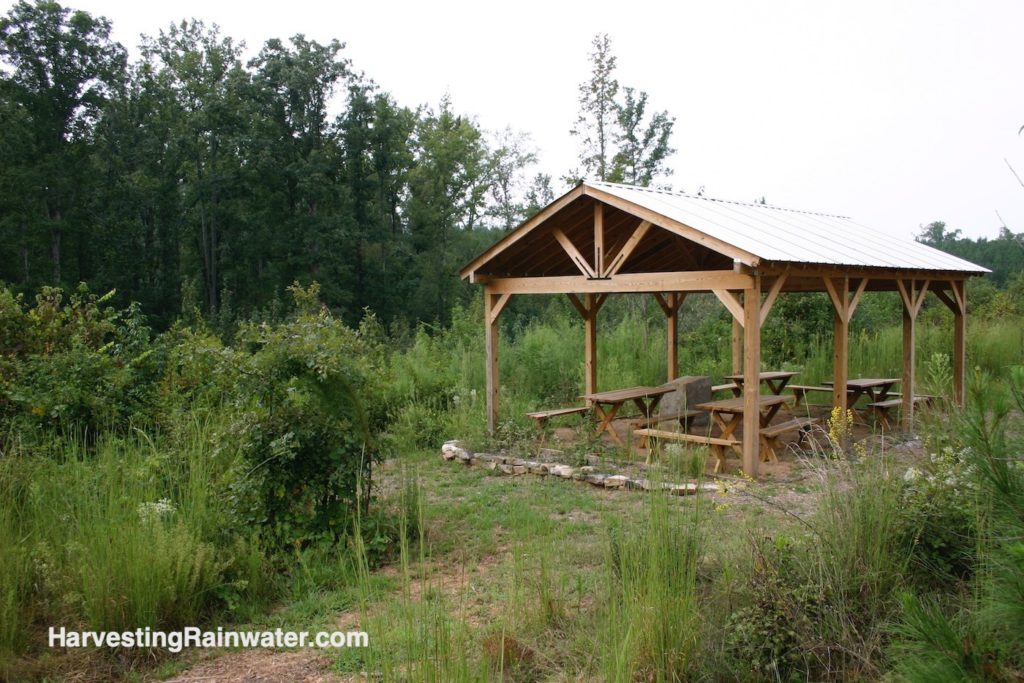
For Tucson- and/or Arizona-specific resources:
– Download AZ Green Burial FAQs, courtesy of Kristine Bentz;
– Contact Kristine by email.
See the new, full-color, revised editions of Brad’s award-winning books
– available a deep discount, direct from Brad:

Volume 1

